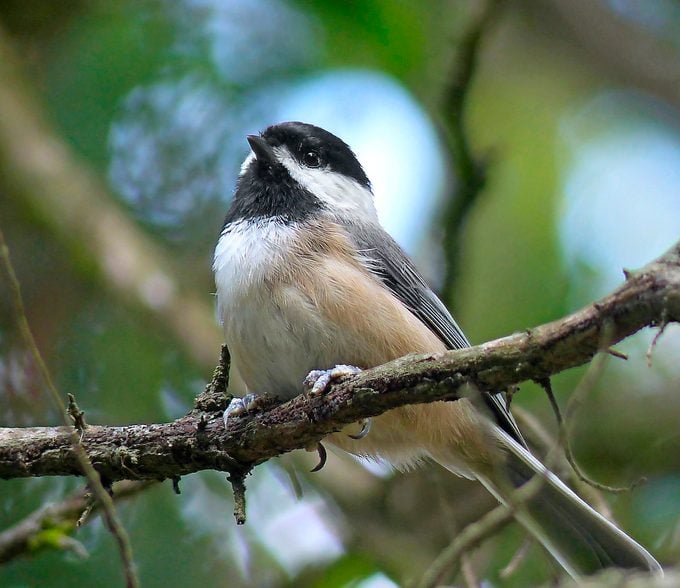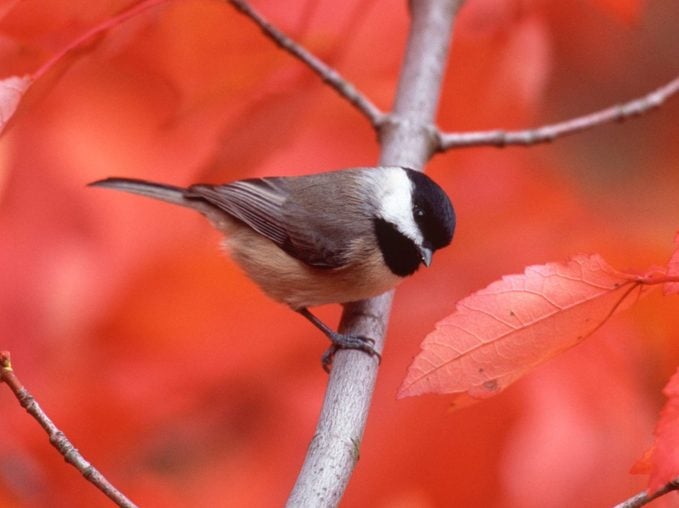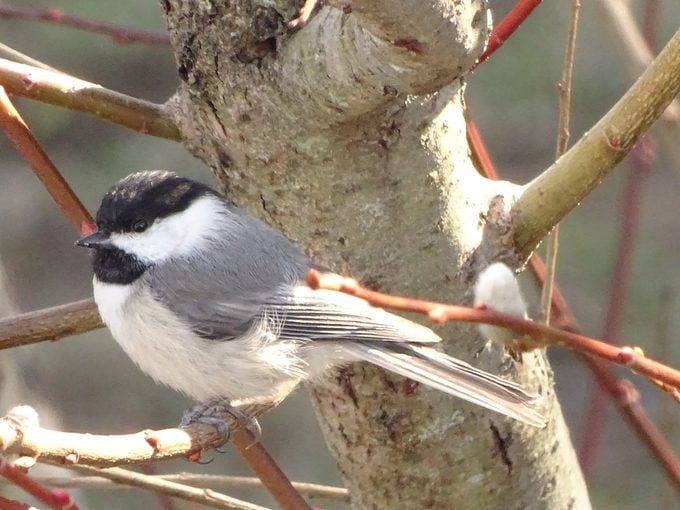How to Identify and Attract a Carolina Chickadee
Updated: Jul. 10, 2024
Attract a Carolina chickadee with birdseed and nest boxes. Learn to tell the difference between a Carolina chickadee vs a black-capped chickadee.
Tiny and chipper, chickadees are among the first backyard birds that many recognize. But a few things set the Carolina chickadee apart from other types of chickadees. Find out how to identify and attract these small songbirds.
On This Page
Carolina Chickadee Range

Carolina chickadees are found year-round in the southeastern United States, as far north as Pennsylvania and all the way west to mid-Texas. Their range overlaps a bit with the more northern (and slightly larger) black-capped chickadee in a very narrow zone that stretches from New Jersey to Kansas.
“I moved to Charlotte, North Carolina, from New York and was looking forward to new backyard birds that were not previously regulars to me. Chickadees are so friendly and outgoing, yet common; so I practically dismissed them for a few days. Then suddenly it dawned on me. Though they look practically identical these are Carolina chickadees—not the black-capped chickadee I knew from the Northeast!” says Birds & Blooms reader Christine McCluskey.
Don’t miss this collection of incredibly cute chickadee photos.
Carolina Chickadee Identification

Telling the two species apart in the overlapping areas of their range can be tricky. Both of these small songbirds have the same black caps and bibs, but Carolina chickadees have duller white coloring on the cheek patch and a bit less white on their tail and wing feathers.
Learn how to identify mountain chickadees.
Carolina Chickadee Song
“The easiest way to tell them apart is by sound,” says Robyn Bailey, NestWatch Project Leader with the Cornell Lab of Ornithology. “The Carolina chickadee’s song is four to six notes, and it has a broader song repertoire than the black-capped’s simple fee-bee song.”
Listen for their familiar, distinctive chick-a-dee-dee call.
Bird songs courtesy of the Cornell Lab of Ornithology.
Learn what a Carolina wren call sounds like.
What Does a Carolina Chickadee Eat?

Insects and spiders make up about 90% of a Carolina’s diet during the warmer months. The birds also enjoy berries and happily visit feeders for suet, peanut chips and sunflower seeds.
Those bug-eating tendencies mean that backyard birders should take extra precautions to help attract and protect them. “This includes not spraying pesticides in our gardens and lawns, and planting native fruit-producing shrubs like blackberry and Virginia creeper,” Robyn says.
Though Carolina chickadees are common, recent research indicates their numbers are falling. “It’s an important reminder that even common backyard species can decline if we’re not careful,” Robyn warns. Help support them and other birds by regularly cleaning feeders and birdbaths, adding predator guards to nest boxes, and keeping cats indoors. Responsible birders can help keep these little fliers happy and healthy long into the future.
Nuthatch vs chickadee: Here’s how to tell the difference.
Carolina Chickadee Nest and Eggs
Mating pairs will often stay together for several years at a time, seeking out cavities in trees. Females build nests of moss, bark and animal fur, then lay about six jelly bean-sized eggs in a single clutch.
These birds also use nest boxes with entrance holes that measure 1 ⅛ inches in diameter. Robyn recommends visiting NestWatch’s website for free birdhouse plans, placement tips and more.
Females fiercely protect their nests: If a predator tries to disturb it, they can give off an almost snakelike hiss to scare it off.
About the Expert
Robyn Bailey manages the research, education, and communication initiatives for NestWatch, the Cornell Lab of Ornintholgy’s citizen-science project focused on nesting birds. Robyn has a master’s degree in fisheries and wildlife from Michigan State University.






















